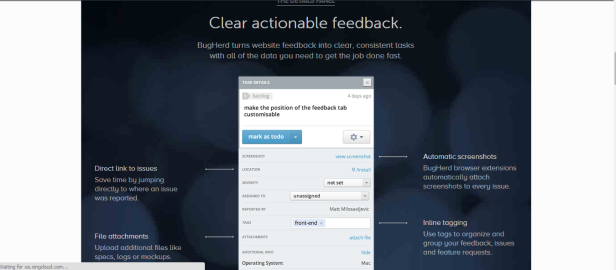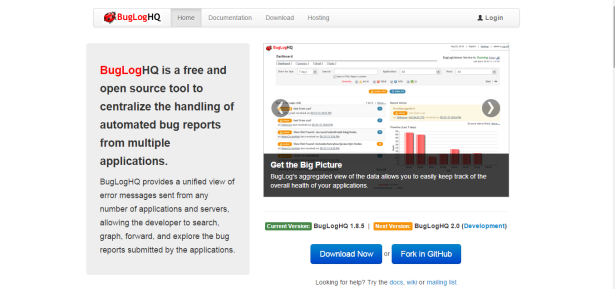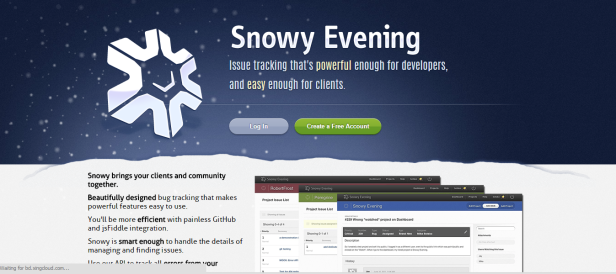Where there is a software development process, their is testing, and where there is testing, there are bugs. In real world, even if you are rock star-coder or developer, you can’t escape bugs. Bugs are universal and are present in every development process.
To manage all the bugs, you need a bug and defect tracking tool, which lets you know about new bugs, their status, impact and other things on whole. With these base features, a lot of customization like notifications, project and milestone tracking, customizable extensions etc. are few new features which are shipped with the bug tracking systems. In common words, a bug tracking system is an essence of a software development process and an integral part of project management.
Let’s take a look at some of the major players in this arena.
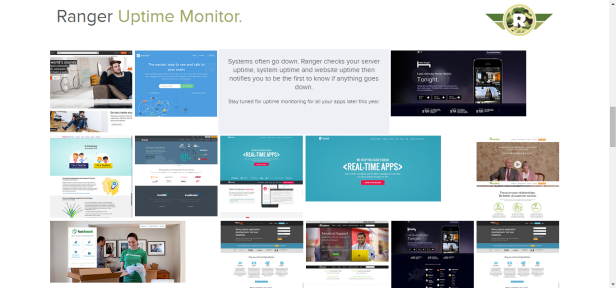
Exceptional tracks errors in web apps and reports them in real-time, so you have all the info you need to fix them quickly and efficiently. It launched at RailsConf in 2008 and now monitors more than 6,000 production applications. You can manage errors, view full backtraces, capture custom data, comment and search for errors, with real-time notifications via SMS, Campfire, Email or via Webhooks.
With multi-app support, it’s easy to manage several apps in multiple deployment environments with support for Ruby, PHP, Heroku Add-On, Django and Node.js. And with a reliable, robust architecture and data filtering for security, Exceptional provides a stable platform to track and report application errors.
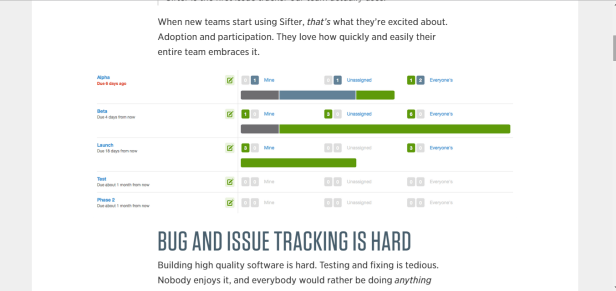
Sifter offers a seamless bug and issue tracking workflow to let you ship higher quality software. With less configuration required, it leaves you more time to work on your application. The project dashboard gives you a quick overview of all projects, while also allowing you to dive into projects and tasks quickly.
Milestones let you break down projects into due dates and keep track of the overall progress of each milestone, with issue counts and status bars presenting you with the most pressing issues. You can also automatically receive a daily summary of the previous day’s activity each morning to keep on top of tickets.
BugHerd provides a simple way to capture client feedback, resolve issues, track bugs and manage your projects. Users report issues using a simple point-and-click interface on your website, and BugHerd turns these into reports with all the information you need to fix the problem. With a simple, easy-to-use interface, you can see visual bug reports and automatically capture client and browser information.
There’s no complicated setup required, and you can log reports in just a few seconds. BugHerd browser extensions automatically attach screenshots to every issue, with other features including direct links, inline tagging, file attachments, full selector data and real-time discussions.
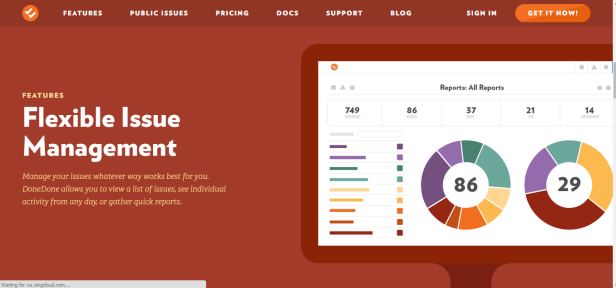
DoneDone is a simple, effective issue tracker to help you keep on top of bugs, ideas and requests through every phase of your project. You can prioritize issues, assign due dates, correspond and share files directly, all with nothing to install — all you need is a browser and an Internet connection.
It also features real-time notifications (direct to your browser), integration with GitHub, Beanstalk, Harvest and Basecamp, and has the abilities to create issues, add files and leave comments directly from email, without ever signing into the application. The powerful tagging, filtering and search functions make organizing your project and tasks quick and efficient.
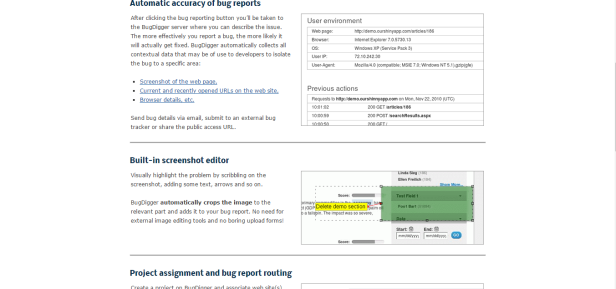
BugDigger provides smart bug reporting for web applications, allowing you to automatically capture screenshots, environment data and website usage history. You can then quickly mark up the screenshot using the built-in editor, with easy integration with Basecamp, Trello, FogBugz, Pivotal Tracker, Unfuddle, Lighthouse and others.
The free BugDigger browser add-on makes bug reporting fast and simple, with the ability to create a project and associate a website with it, and allow anyone to send feedback or report a bug without the need to register or sign-in. BugDigger can also send bug report emails to you automatically, or submitted to your issue tracker.
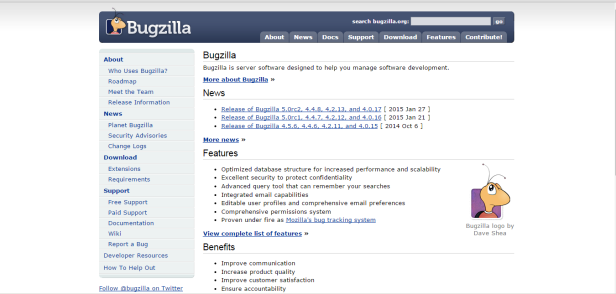
Bugzilla is a server-side bug tracking system that allows you to keep track of outstanding bugs in your product. You can track bugs and code changes, communicate with collaborators, submit and review patches, and manage quality assurance. It’s supported by a dedicated team, is constantly reviewed and tested by the Mozilla Foundation, and can be installed on many operating systems, including Windows, Mac OS X and Linux.
You can use Bugzilla for systems administration, deployment management and IT support queues.
BugLogHQ is a free, open-source tool to centralize the handling of automated bug reports from multiple applications, giving a unified view of error messages so you can search, graph and forward bug reports. With the dashboard, you have an aggregated view of data to help keep track of the overall health of your applications and any current issues.
BugLogHQ correlates bug reports with similar occurrences, so you can identify trends and easily find out which apps or features are having problems. With the mobile-friendly view you can keep tabs on the app activity when on the go.
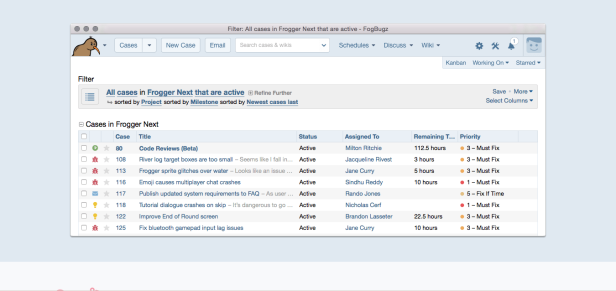
FogBugz is built for teams to track bugs, issues and customer support tickets through every phase of the development process. With issue and bug tracking, customizable case lists and histories, source control integration and automated error reporting, you can quickly incorporate user feedback directly into project.
With the advanced project management features you can create a detailed project outline, enter time estimates and set milestones. The scheduling function means you can produce ship date probabilities with the timeline chart, providing a detailed picture of what each developer (or team member) is likely to be working on at various points of the project.
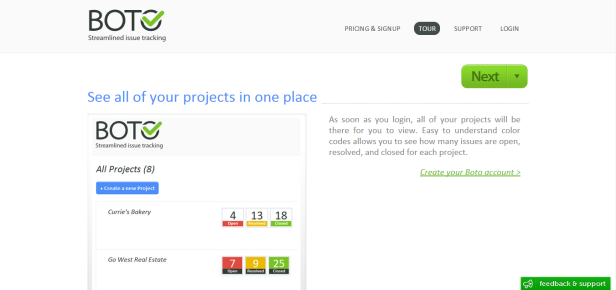
Boto offers streamlined issue and bug tracking with an intuitive user interface and instinctive workflow. You can create a new issue quickly, with no need to reload or exit the existing screen, and easily manage projects without having to constantly reload or navigate away. You can prioritize, comment, change status and attach screen shots with a single click.
Boto also features bug priority reports, keyboard shortcuts, email integration, notifications and easy-to-understand color codes to see how many open, resolved and closed issues there are for each project. You can also quickly send out email invitations, and select users’ roles as either staff or clients.
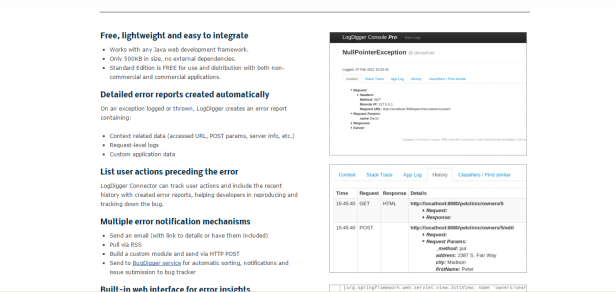
LogDigger provides a suite of tools to help you collect and classify detailed error reports and logs for your Java applications, so you can fix bugs and errors faster. Request-level logs, context and environment details are all collected, with notifications sent out instantly. It works with any Java web development framework, is only 500KB in size, with no external dependencies, and has the ability to build custom modules via HTTP POST and send to BugDigger for automatic sorting.
The intuitive interface presents in-depth error insights with no need for an external error logging server, as the LogDigger Connector has a simple web module which is accessible from your application.
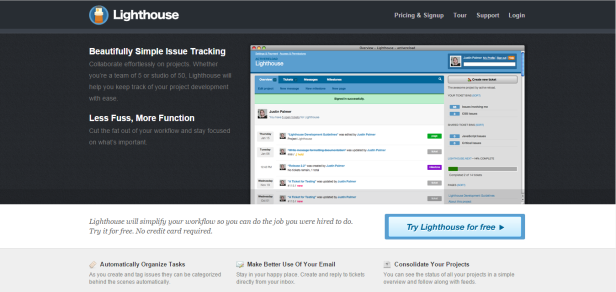
Lighthouse offers simple issue tracking and effortless collaboration on projects to help keep track of your project development. You can automatically organize tasks, use tags, set milestones, establish release dates, and create and reply to tickets directly from your inbox. Using the dashboard, you can see the status of all your projects, attach documents or images directly to tickets, and even integrate with customer support app Tender.
Lighthouse includes simplified navigation, ticket grouping, activity streams and online documents, to help you stay organized and on top of critical issues. The mobile optimized interface means you can manage tickets on the go through email or RSS.
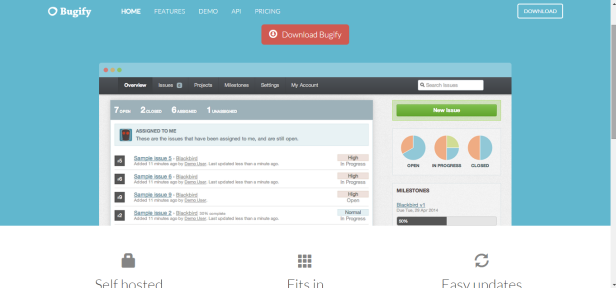
Bugify is a simple yet powerful issue tracking system, which features issue priorities, search filters, keyboard shortcuts, email notifications, issue linking, labels, milestones, Markdown (for formatting), user/group permissions and support for multiple languages. There’s SCM and VCS integration, with WebHook support, drag-and-drop attachments and real-time notifications — so there’s no need to constantly check emails when an issue is updated.
Using the status graphs, you get an immediate overview of how many issues exist of different priorities, so you have a clear picture of how your development team is performing. Bugify Mobile is available free for iOS or Android, so you can manage issues from anywhere.
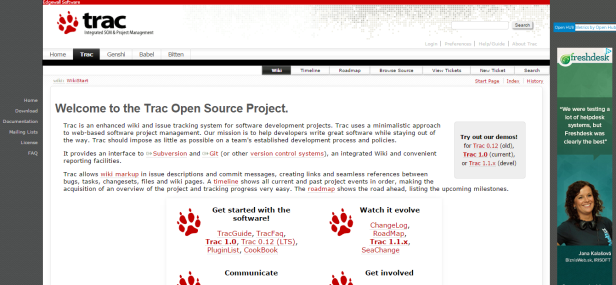
Trac is an open-source wiki and issue tracking system, with an interface to Subversion, Git and other version control systems, providing a minimalistic approach for tracking, reporting, and fixing bugs and issues. The Trac ticket subystem means you can issue trackers, keep updated on project progress, write and use reports, execute custom ticket queries, and even modify a batch of tickets in one request.
Other useful features include search, RSS, timeline history and accessibility keys support. Trac allows for wiki markup to issue descriptions, with seamless references between bugs, issues, tasks, changesets and files. The roadmap feature presents the road ahead, listing all the upcoming milestones.
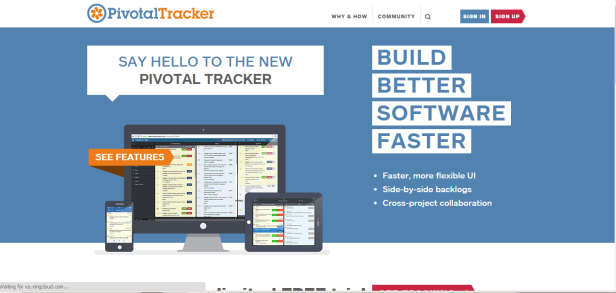
Pivotal Tracker is an agile project management tool that encourages you to break your project down into bite-sized stories, use points to estimate each story’s relative complexity, and prioritize it. In essence it lets you track much more than bugs, using a simple workflow to make project development a painless process.
There’s a comprehensive API, web hooks and more than 100 add-ons to help incorporate Pivotal Tracker into your development. Charts show historical data trends and help you spot project bottlenecks, allowing you to constantly manage scope and focus on what’s essential.
-
Snowy Evening
Snowy Evening is an issue tracking application that aims to be powerful enough for developers, but simple enough for clients to use with ease. It offers GitHub and jsFiddle integration, with a clean, well-laid out interface.
The dashboard overview gives you a summary of every open project you’re involved with, and you can quickly jump between projects and easily address large volumes of issues with efficiency. You can filter your issue lists and save your filter for future use, and use the smart search feature to help find urgent issues. With the History function, you can see an entire issue’s history from the moment it was issued.
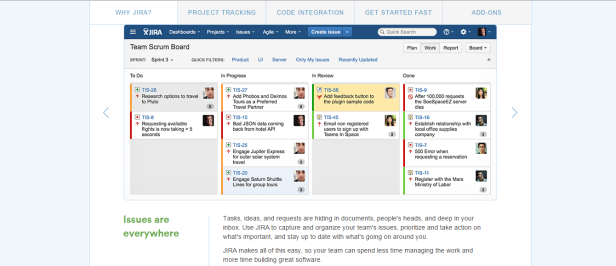
Snowy Evening is an issue tracking application that aims to be powerful enough for developers, but simple enough for clients to use with ease. It offers GitHub and jsFiddle integration, with a clean, well-laid out interface.
The dashboard overview gives you a summary of every open project you’re involved with, and you can quickly jump between projects and easily address large volumes of issues with efficiency. You can filter your issue lists and save your filter for future use, and use the smart search feature to help find urgent issues. With the History function, you can see an entire issue’s history from the moment it was issued.
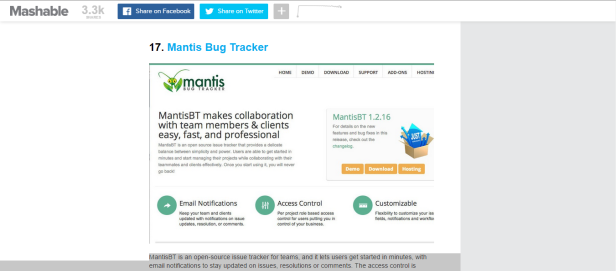
MantisBT is an open-source issue tracker for teams, and it lets users get started in minutes, with email notifications to stay updated on issues, resolutions or comments. The access control is managed per project, with role-based access and the ability to customize your issue fields, notifications and workflow to suit individual requirements.
It’s built on PHP and supports Linux, Windows and Mac OS X on the server side, and is compatible with all major browsers. MantisBT supports multiple projects, issue change history, export to CSV, source control integration, time tracking and much more. There is no limit on the number of users, issues or projects, with the added ability to extend functionality through the use of web hooks and plugins.
